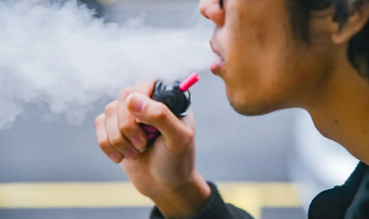Up to 10% of people in the United States are affected by seasonal depression, depending on where they live. Seasonal Affective Disorder (SAD) is a mood disorder that occurs at the same time every year when seasons are changing. Although fall and winter months are the beginning of holiday season celebrations, it’s also when this depression typically hits people. This disorder can also be known as “winter blues” since it’s when most people get this disorder.
Symptoms
There are many symptoms of this disorder, specifically for each season. In spring and summer, some of the symptoms include weight loss, not being able to sleep, no appetite, and anxiety. In fall and winter, the symptoms of SAD include oversleeping, many food cravings, weight gain, lack of energy, and always being tired. Some symptoms for any season include negative thinking, changes in mood/sleep/food, and trouble staying focused on certain activities being done. People who have bipolar disorder have a high risk of Seasonal Affective Disorder.
Causes
The main cause of seasonal depression is known to be the lack of sunlight exposure. This can disrupt our body’s internal clock – our circadian rhythm. Serotonin and melatonin levels are also a cause of SAD. The reduced sunlight exposure may lead to imbalances in these chemicals connecting to similar symptoms in depression. Serotonin will affect a person’s mood. The change in season can disrupt the balance of the level of melatonin in the body, which can change sleeping patterns.
Treatments for SAD
There are many different treatments for each individual’s specific needs for this disorder, in the categories of self-care, therapies, and medications. Managing SAD by yourself may include staying active throughout the day to brighten your mood. Eating healthy, physical exercise, and getting closer to family and friends in this dark time may also help with SAD. Following up with therapies, different therapies can help. Some therapies include cognitive behavioral, chronotherapy, and light therapy. Medications given for Seasonal Affective Depression are antidepressants, Bupropion, and Selective Serotonin Reuptake inhibitors (SSRIs). Many people say that Vitamin D supplementation is also beneficial to support this disorder.
How to feel better
If you are diagnosed with SAD, you should be patient and try to better yourself if you can. Physical exercise will make you feel good no matter how short your workout is, and you’ll feel better right away. Making sleep a priority will help ensure you get just the perfect amount of sleep. Avoid eating large meals or caffeine close to your bedtime. Staying hydrated so you don’t feel dehydrated throughout the day will help your mood and energy level rise instead of being moody all day. Lastly, try to manage your stress and limit it. Procrastination isn’t good, but learning to think positive and managing your time well can help lower your stress.
SAD is a real and challenging condition for some people, but with proper understanding and treatment, people can manage to overcome it. If you or anybody you know is showing some of the symptoms mentioned of seasonal depression, get help from a professional to help guide and support you with your needs. Take steps to keep your mood and motivation in check throughout the year. There is hope for you or your loved ones to get through this tough time through the darker seasons and embrace the bright days ahead of us!




























































































































